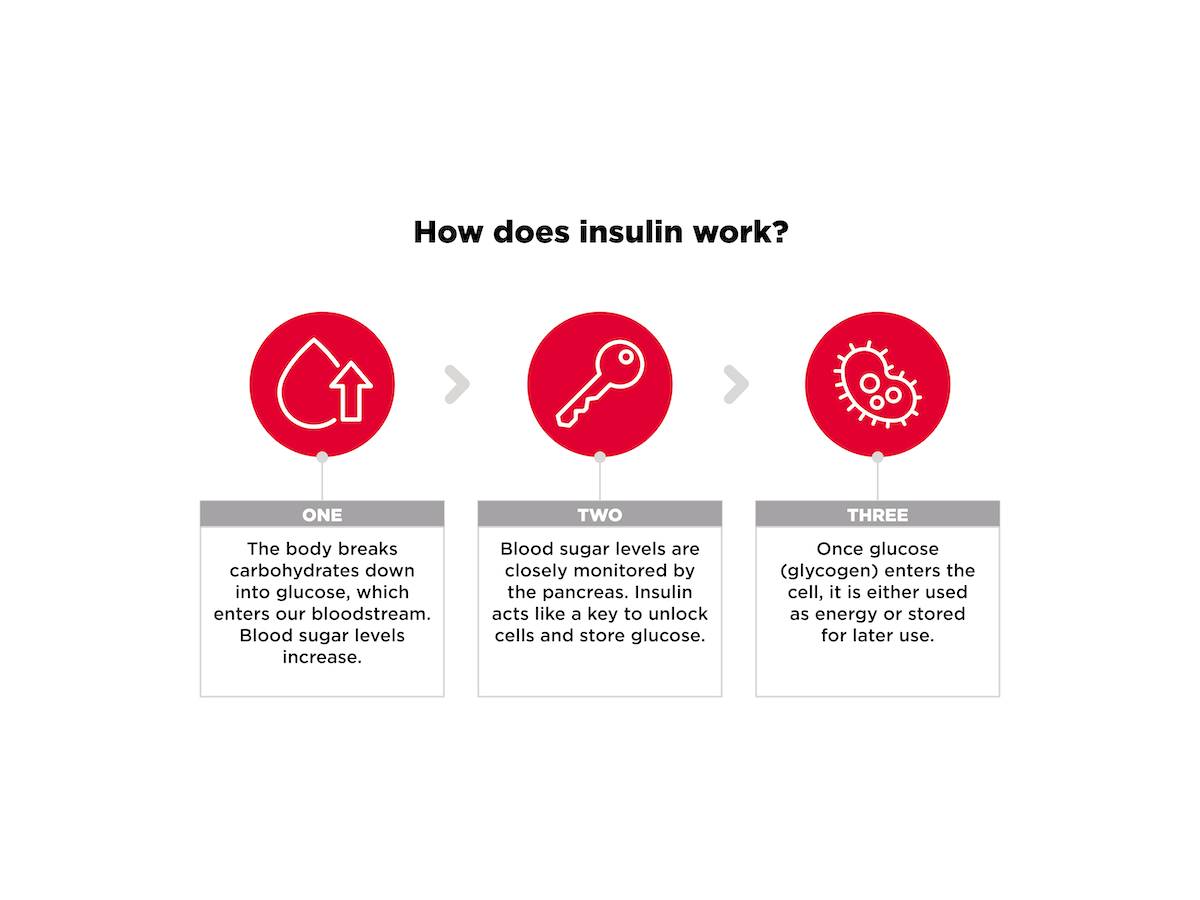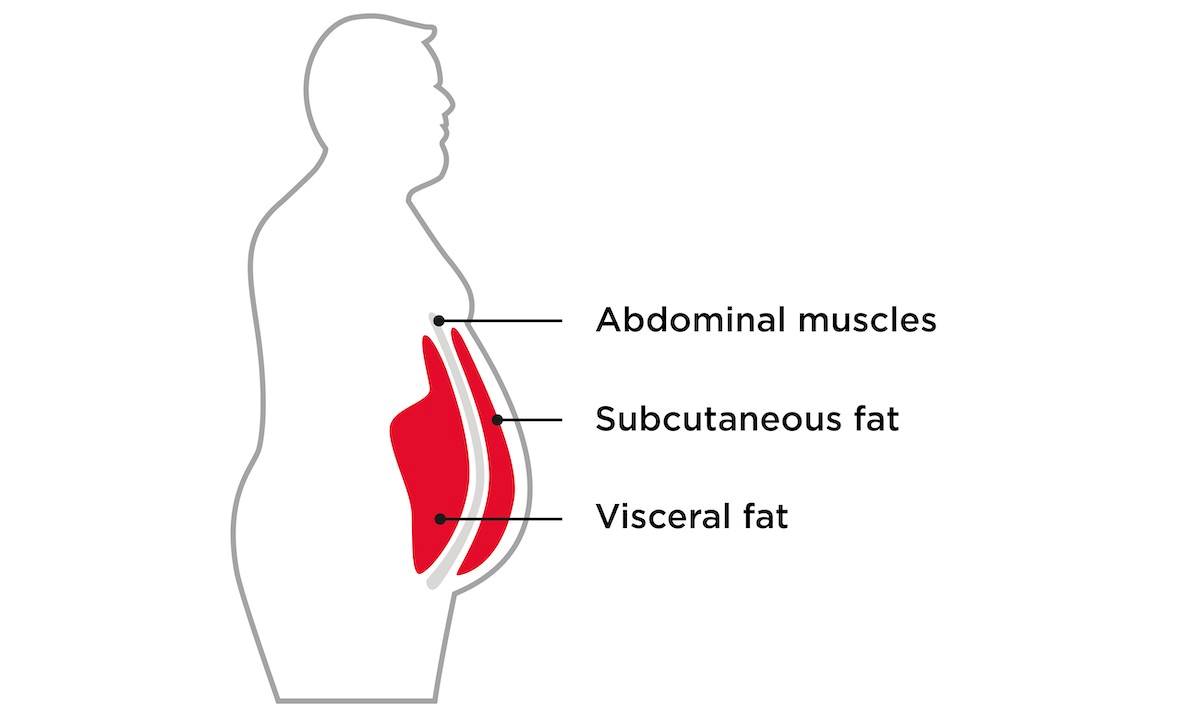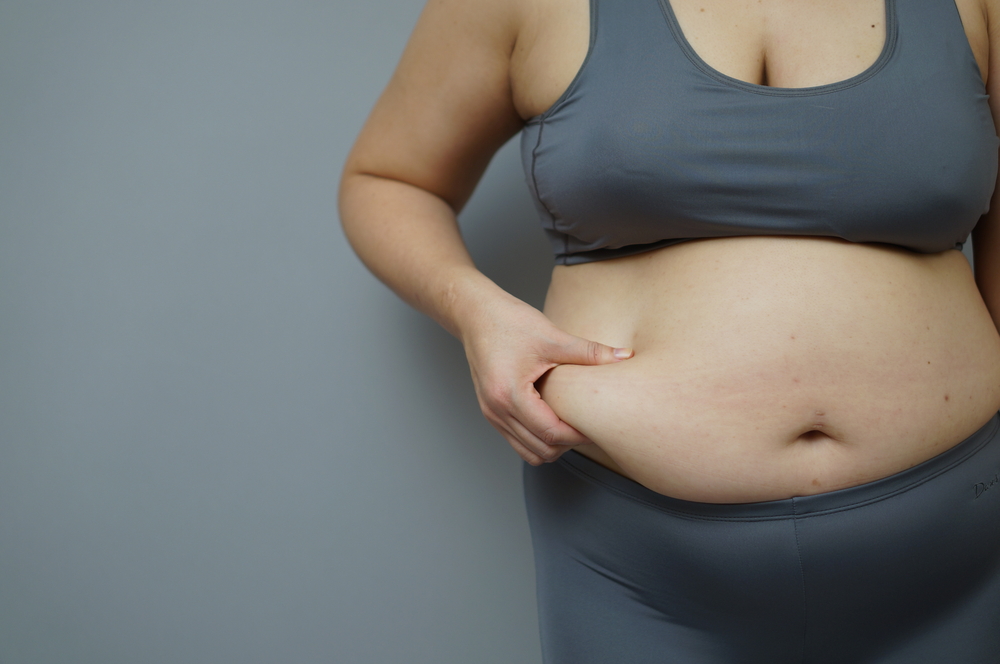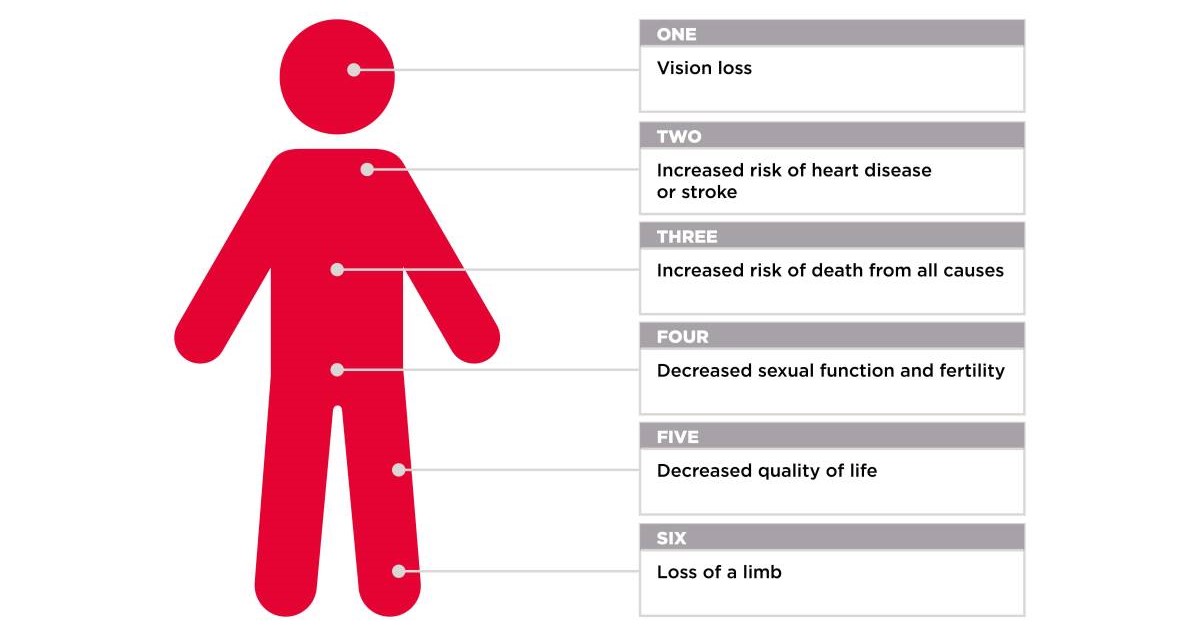Your Body Fat Storage Pattern Can Increase Your Risk Of Diabetes
What do men and women going through menopause have in common with each other? Both are at a higher risk for developing type 2 diabetics.
Why?
Hormones play a role in how your body stores fat after eating too many carbohydrates.
We explore the causes, effects, and ways to prevent diabetes in men and women after menopause.
What is Type 2 Diabetes?
Diabetes mellitus, in general, is a chronic disease that affects the entire body. It alters the way the body stores, converts and uses carbohydrates.
Type 2 diabetes puts you at a higher risk for serious medical conditions like heart attack, stroke and heart disease.
Diabetes is a serious disease. Diabetes and its effects can be difficult to understand.
Let’s do a quick recap.
What is the difference between Type 1 and Type 2 Diabetes?
Type 1 diabetes is a condition that you are born with, or can develop, while type 2 diabetes is completely preventable, and is caused by unhealthy modern lifestyles.
Type 1 diabetes, also known as autoimmune diabetes, is a condition in which the body attacks the cells of your pancreas responsible for producing insulin.
All hormones work like a key that unlocks specific locations around the body.
The body converts carbohydrates into glucose when you consume or drink them. Insulin is responsible for transporting glucose throughout the body, and unlocking cells to allow it to be stored.
Type 1 diabetes is characterized by an insufficient insulin production. Insulin is not present to unlock the storage sites as glucose enters bloodstream. The bloodstream becomes flooded with glucose, resulting in dangerously high levels of blood sugar.
Too much sugar in your blood can damage blood vessels, which supply vital organs with blood. This increases the risk of heart problems, strokes, blindness and nerve disorders.

In the UK, only 8% of diabetics have type 1 diabetes [1]
The type 1 diabetes only accounts for a small percentage of all cases.
Type 2 diabetes, on the other hand, is largely preventable.
Which individuals are most at risk for developing type 2 Diabetes?
You might think diabetes is only something that other people have to deal with. You could be more at risk if you do not fall into any of the six categories.
Being overweight or obese
Diabetes is more common in men with a circumference of over 94 cm and women with a circumference over 80 cm [3].
Age 65 and over
In the United Kingdom, half of those with diabetes are older than 65 and a quarter over 75 years [4].
High cholesterol or blood pressure
High blood pressure is often accompanied by poor insulin sensitivity. This means that their bodies are unable to manage blood sugar levels. They are therefore at a higher risk of developing type 2 diabetes than those with normal blood sugar levels [5].
A family History of Diabetes
If you have a family member with diabetes, your chances of developing it are four times higher. The odds increase if you’ve got three or more relatives with diabetes [6].
Physically inactive
Type 2 diabetes is a result of low physical activity and poor fitness.
A lifestyle that is unhealthy
Type 2 diabetes has been linked with chronic stress, poor sleep and alcohol consumption [7],[8],[9],[10],[11].
Who is at greater risk: men or women?
The obesity rate is similar for men and women, but type 2 diabetes affects men 50% more than it does for women [12],[13].
According to the latest major report of the World Health Organization, obesity has reached ‘epidemic levels’ in Europe.
Why are men so much more susceptible to injury if both sexes gain weight at the same rate?
This is where things get interesting.
What happens if you consume too many carbohydrates?
If our daily calorie intake exceeds our energy needs over a period of days, months, and years, the dietary fat will be stored in three places: directly under the skin (under the epidermis), viscerally around our organs, or in the liver.
When we eat carbohydrates our body reacts differently.
Normal circumstances either use carbohydrates as fuel, or store them in muscle cells when they are not needed. Once your muscles are full, the excess carbohydrates are sent to the liver to be converted into fat.
This fat can either be used as energy or stored by your liver.
The danger is in what follows.
Exercise is essential to your health.
Insulin stimulates this process of lipogenesis. If you’re ‘insulin-resistant’ (caused, for example, by poor diet, lack of exercise, sleep problems, stress and so on), the levels of insulin in your body will be much higher. Insulin has nowhere to go, and high insulin levels cause the liver to store and create fat.
This entire process will take you much less time than what you think.
In one study participants were instructed to consume a bag sweets and drink 300ml bottles of Pepsi with full sugar, along with 30mls of fruit juice, daily. After only three week, all the volunteers saw their liver fat increase by almost one third [16].
How does diabetes relate to this?
Fat is the answer.
Fat is a very intelligent organ
The fat on your body is more than just an ugly appendage that hangs over your jeans and ruins your otherwise perfect physique. It is a complex organ which performs many functions, including regulating our hunger [17].
Researchers also discovered that visceral adipose tissue secretes an insulin-resistant protein [18]. A poor insulin management can lead to visceral obesity, which in turn leads to a further reduction of insulin sensitivity.
The risks do not stop there.
Visceral fat protects our organs. When more than 10% is visceral fat, the risk of developing type 2 diabetes increases dramatically [19]. Breast cancer, Alzheimer’s disease, heart disease, and colorectal carcinoma are all at increased risk [20].
Why do women and men experience this risk differently
It all boils down to an oestrogen hormone…
Oestrogen is a natural diabetes protector
Women tend to associate hormones with their periods and the desire to eat anything they see. A healthy oestrogen level is beneficial for women with diabetes.
Oestrogen and visceral fat have a bi-directional relationship; the higher the oestrogen, the more fat is stored under the surface of the skin. The more oestrogen you have, the more visceral fat you store [21].
This is an advantage before menopause.
Oestrogen increases fat-storing cell numbers in areas like the breasts and hips as well as the back of the arms, thighs and the back of the thighs, which are all places that are away from the trunk, and the danger zone.
Unfortunately, the men are the ones who have to suffer the most.
The visceral fat of men is higher
Men have less body fat on average, but their hormonal profile can cause them to gain more around the organs and trunk. This becomes more likely as testosterone levels decrease with age [23],[24].
Men are also less likely than women to adopt a healthy lifestyle and diet, or to seek medical attention [25],[26],[27].
The stats are not lying.
The risk of developing diabetes is higher in men who are overweight, smoke, and drink excessively [28],[29],[30].
Don’t let up on the ladies either.
After menopause, the risk of developing type 2 diabetes increases
Before menopause, women have the upper-hand. But afterward, it is a completely different story.
Weight gain and insulin demand are increased when oestrogen levels drop completely at menopause.
Women with diabetes who are menopausal may also experience more severe symptoms, such as hot flashes or night sweats.
What are the risks associated with type 2 diabetes?
It’s possible that you haven’t yet connected the dots between the takeout on Friday or the pints at the pub the night before.
Type 2 diabetes affects nearly all parts of the body.
1. You will die younger
Diabetescs die on average ten years sooner than healthy adults [33].
These figures are even starker if you have to lose a limb.
Only 41% (34%) of diabetic amputation patients survive five years or longer after their surgery.
2. You are at an astronomical risk of death from heart disease and stroke
Type 2 diabetics are five times as likely to suffer a stroke or heart attack than healthy adults [35].
Diabetes affects women twice as much as it does men. Women are also at a higher risk for complications after a cardiac arrest, including blindness [36], kidney diseases [37] and depression [38].
3a. Reduced fertility and sexual function in women
Women with type 2 diabetics have a harder time conceiving and, when they do, the risk of miscarriage [39], stillbirth [40], preterm birth and caesarean delivery increases.
Gestational Diabetes (GD) is caused when a mother’s insulin production is insufficient to support her and her child. Women with a history of type-2 diabetes, obesity, or being overweight are more likely to develop GD. GD typically disappears after pregnancy. However, around 50% of women develop type 2 diabetic [41].
Women can experience a more severe form of PMS, heavier periods and more UTIs [42].
3b. Reduced fertility and sexual function in men
You can expect to see your sexual drive plummet if you have type 2 diabetes. Up to 75% men with type-2 diabetes will experience ED [43],[44]. Uncontrolled blood sugar is believed to cause damage to the nerves in the penis and the blood vessels [45],[46].
4. You could lose an limb
One in four diabetics also suffer from diabetic ulcers [47]. Diabetes-related complications are responsible for 60% of all non-traumatic lower limb amputations in the world [48].
5. Reduced quality of Life
Type 2 diabetes is a condition that can make it difficult to perform simple tasks, such as shopping for food, getting dressed, or putting on shoes.
Statisticians consistently report that diabetes patients’ scores on quality of life and life satisfaction, as well as their mental health, are all significantly lower [49],[50]. Type 2 diabetics also have a higher risk of suicide [51].
6. Your sight could be lost
The retina (the delicate tissue behind the eye) can be irreversibly damaged by uncontrolled blood sugar levels.
Signs include dark spots, blurred vision or even loss of vision. These symptoms do not appear until irreversible damage is done.
Diabetes is the leading cause of blindness and sight loss in the west [52].
Diet and exercise can help you avoid these risks, regardless of your gender.
If you think you will never see another carb in your lifetime, you are wrong.





